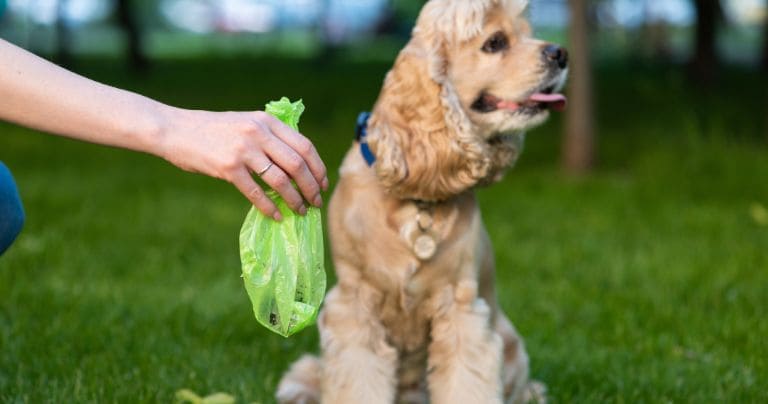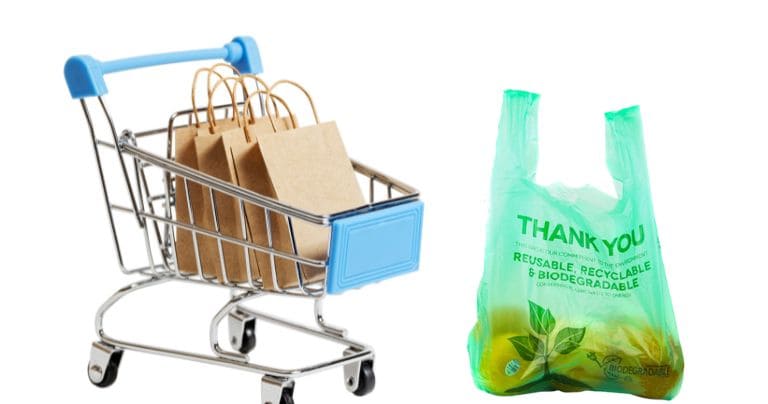Have you ever found yourself on a walk with your furry friend, baggie in hand, and wondered if there’s a better, more sustainable way to dispose of pet waste? You’re not alone. As an advocate for both pets and the planet, I’ve delved deep into the world of compostable dog waste bags to find a solution that aligns with my eco-conscious values.
Indeed, compostable dog waste bags are a promising solution to the plastic problem plaguing our planet. These bags are designed to break down much faster than traditional plastic bags, reducing landfill waste and supporting a healthier environment.
With growing awareness and concern for environmental sustainability, it’s crucial we explore all avenues that contribute to a greener world. Let’s dive deeper into why compostable dog waste bags are worth considering for every pet owner.

Why Should You Consider Switching to Compostable Dog Waste Bags?
Embracing sustainability in our lifestyle choices means being mindful of the products we use — from our morning brew to how we pick up after our pets. Compostable dog poop bags offer an eco-friendly alternative to the traditional plastic versions, and there are several compelling reasons to opt for this sustainable solution.
Consider the lifecycle of waste
A common plastic bag can take hundreds of years to decompose, adding to the ever-increasing problem of landfill waste and pollution. Compostable bags, on the other hand, are made from materials that break down into non-toxic, organic compounds in a rapidly accelerated timespan, often just months, which significantly lessens their environmental impact. Creating compostable bags also tends to be more eco-friendly, involving more efficient processes and sustainable resources, like using cornstarch instead of petroleum-based plastics.
It’s how we roll
Using compostable bags doesn’t just lessen environmental harm, it can increase our sense of accountability and environmental stewardship. As with any eco-friendly product, using compostable bags means setting an example for others and celebrating a culture that values and actively cares for our planet.
Not all compostable bags are created equal, so it’s important to look for reputable certifications and standards, like ASTM D6400 in the Australia, BPI in the USA, OK Compost, EN13432 in the European Countries, which means products have been tested to be sure they meet strict guidelines for compostability and sustainability. Keep an eye out for the sure-to-follow wave of fakes by finding bags that carry legitimate certifications, which are usually clearly marked — and get ready to green up your daily routine.

How Do Compostable Dog Poop Bags Work?
Compostable dog poop bags are essential for the eco-friendly pet owner having a positive impact by choosing more sustainable options rather than traditional plastic bags that are devastating our planet. As a dog owner, we are responsible for taking care of Mother Earth as well as our companions, and the above-mentioned bags are by far the most viable solution available to make a major dent in our greater footprint. But how do these seemingly “magical” bags work?
Here’s how exactly compostable dog poop bags work and why modern pet care is becoming increasingly synonymous with “eco-friendly.”
The Science Behind Composting
As their name suggests, compostable doggie poop bags are made of materials that will naturally break down into organic elements in a compost environment, leaving no toxicity in the soil. This process combines deciduous urea green with microbial activity. The temperature is between 120 and 160 degrees as well as moisture and oxygen, which is a common combing of conditions you’d find from an industrial composter.
Paper, yard waste, and most food scraps naturally meet all of these conditions. These bags are also designed to decompose approximately within 6 months to 2 years, breaking down three-four times faster than those plastic bags we all deplore that end up lasting 500 years.
The Toro’s Effect
So, what exactly are these bags made out of, and why are they able to decompose? The ingredients are the secret sauce, if you will, and the answer to how exactly compostable dog waste bags work.
These bags are made out of plant ingredients like vegetable oils, what you’d find in cornstarch and PLAs. These substances not only decompose, they essentially become compost; that is, organic matter that enhances the characteristics of the soil and adds nitrogen, whereas compared to plastic, the material breaks down into smaller fragments, but never fully disappears.
The Importance of Disposal
So, none of this fascinating, innovated technology would be possible without the cooperation of us humans. The pet owner is responsible for the disposal of these bags properly so they can go on to provide more value to the environment than when they were all nasty after pet owners performed their due diligence in the morning or afternoon.
Fact is, these bags need to be disposed of in a composting environment—and not every facility accepts your pet’s waste and them along with it for composting and other environmental activity. This is where it still takes some responsibility of those eco-friendly citizens to understand the restrictions and, and what guidelines need to be followed, and check to see if you’re in a good one.
Posture their use, these compostable pet poop bags become part of the bigger solution to reducing pet waste in our soils and water, decreases landfills and corresponding harmful gases, while making pet ownership more sustainable.
In short, each of these bags is designed to decompose in as natural a way as possible and contribute some value and reduction to the environmental mess we’ve all made of our once-clean planet—even if they require us to make that happen after we’re done using them in the morning with our pet.

What Are the Benefits of Using Compostable Dog Waste Bags?
Every effort towards a more sustainable lifestyle helps, and as a pet owner, making eco-friendly choices in every aspect of your life, including pet care, is essential. One of the simplest changes to make with a significant impact is to switch to compostable dog waste bags. This choice is not just another way to go green; it goes a long way toward protecting the environment, our communities, and ourselves.
Here are some of the reasons why you’ll want to consider using compostable dog waste bags, and why they’re the better choice for environmentally-conscious pet owners.
Reduces Environmental Impact
The leading benefit of compostable dog waste bags is their minimal environmental impact. It can take hundreds to thousands of years for traditional plastic bags to decompose, but compostable bags are formulated to break down in a matter of 90 to 180 days, under the right conditions. This rapid decomposition helps to reduce landfill waste and the buildup of plastic pollution that’s damaging to wildlife and our ecosystems.
By choosing to go with compostable bags, you will help to lessen the plastic burden on the earth and promote an environment that’s less toxic for both our generations and those to come.
Made From Renewable Resources
Many compostable dog waste bags are made from plant-based materials, such as cornstarch and other renewable resources derived from vegetable oils, among other materials. This shift from fossil fuel to renewable-based plastic production results in fewer carbon emissions and a smaller carbon footprint for pet waste management overall.
By supporting products made from renewable resources, you’re helping to fuel the growth of greener industries and technology, resulting in a more sustainable environment.
Encourages Responsible Pet Ownership
Using compostable dog waste bags indicates a commitment to responsible pet ownership that extends beyond taking good care of your furry friend and considers the broader implications for the planet. This act has the power to inspire other pet parents in your community to make eco-friendly choices of their own, creating a ripple effect that results in even greater environmental benefits. It also starts conversations about sustainable living and conscientious pet care, raising awareness and motivating curious citizens to learn more and get involved in the movement for a greener future.
Supports Waste Reduction Efforts
As the name suggests, compostable biodegradable bags play a vital role in waste reduction. By breaking down quickly and safely, they transform what would otherwise be pollution into compostable material that can be used to improve soil health when processed in designated composting facilities. This shift from waste to resource is reflective of the model of a circular economy, which focuses on maximizing the life cycle of materials and minimizing their amount of waste.
Safe and Hygienic
In addition to carrying out eco-friendly duties, biodegradable dog poop bags provide a safe and hygienic way to handle pet waste, benefiting the health of the public and the Earth. When pet waste is disposed of properly using these bags, it minimizes the spread of pathogens that can contaminate waterways and soil, making certain that communities remain healthy and clean. Also, these eco-friendly bags restrict the exposure waste management workers and the public get to harmful plastics and chemicals.
In conclusion, the transition to compostable dog waste bags presents an effortless, yet meaningful way to help the environment, support sustainable living, and promote responsible pet ownership. By selecting compostable bags, you can ensure your four-legged friend’s needs are cared for while simultaneously working toward a healthier planet and a brighter future for all.
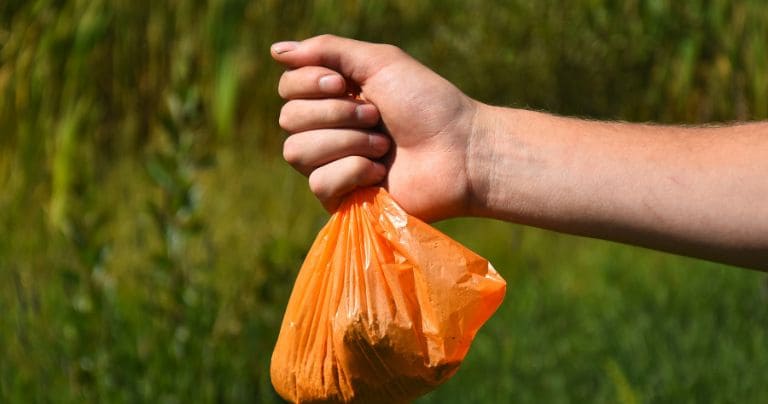
How Can You Ensure Your Compostable Dog Waste Bags Are Eco-Friendly?
In the pursuit of a more sustainable lifestyle, pet owners can rest assured that choosing compostable dog waste bags over traditional plastic ones is a solid first step. However, in a market flooded with greenwashed products, a little due diligence is called for to ascertain that your favorite four-legged friend is doing his part for the planet along with you. Here’s a comprehensive guide to the key ways to ensure that the compostable dog waste bags of your choosing are just as environmentally responsible as your canine companion would have you believe.
Verify Certifications and Standards
The first thing to learn about when it comes to the eco-friendliness of compostable bags are their certifications — such as ASTM D6400 in the U.S. and EN 13432 in Europe — see that the product meets strict requirements for compostability and biodegradability, indicating that the product can break down in a composting situation within a given time span and with no toxic residue. Look for these on the packaging or on the manufacturer’s website before you commit to see evidence of the product’s green integrity.
Research the Materials
The materials used to make the compostable dog waste bags you choose are perhaps the most important factor of all. The most eco-friendly choices are those made from renewable resources such as cornstarch, which allow the bags to biodegrade more easily in composting environments — as well as meaning that they don’t rely on the products of fossil fuels. Beware of those that don’t specify exactly what they’re composed of, or which use terms like “biodegradable” without the certifiable compostability which would indicate that they’re truly eco-friendly.
Investigate the Manufacturing Process
However, the eco-friendliness of a product isn’t solely about the materials from which it’s made. It’s also about how it’s made. Look for companies that emphasize sustainable manufacturing processes, such as using renewable energy sources and working to minimize waste and water usage. Companies that are transparent about their manufacturing practices are typically the most reliable when it comes to their environmental claims.
Investigate Proper Disposal Methods
Even the most eco-friendly compostable dog waste bags require proper disposal in order to break down as intended. It’s important to know that just because something is compostable doesn’t mean you can toss it into the wild or into your standard garbage can. These bags must be disposed of at municipal composting facilities that handle pet waste. Research local composting options and guidelines, as improper disposal can negate the environmental benefits of using compostable bags.
Support Responsible Companies
Lastly, think about the overall environmental commitment of the companies you support. Companies that go beyond simply selling compostable dog waste bags to engage in wider sustainability practices, such as supporting green initiatives or using recycled packaging, are more likely to be the ones that are truly offering eco-friendly products. By supporting those companies, you not only ensure that your compostable dog waste bags are eco-friendly, but you also contribute to a broader positive impact on the planet.
By taking these steps to confirm the eco-friendliness of compostable dog waste bags, you can make a more informed, responsible decision that’s better for both the environment and your pet. It’s a proactive approach that demonstrates a deeper commitment to sustainability and ensures that our love for our pets doesn’t come at the expense of the planet.
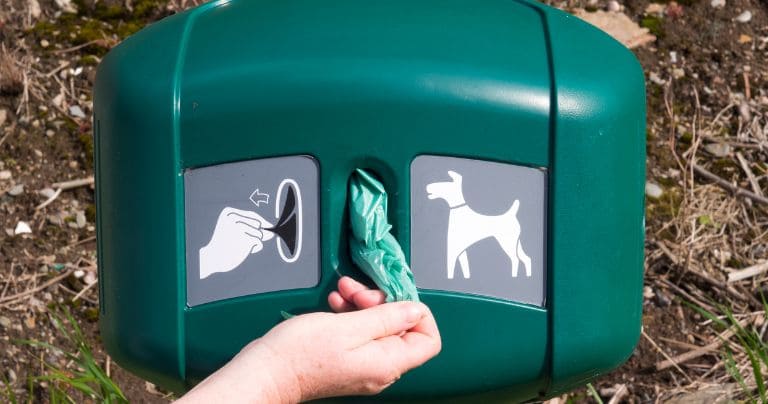
Are There Any Drawbacks to Using Compostable Dog Waste Bags?
Compostable dog waste bags are indeed an appealing option for environmentally conscious pup parents, but it’s important to be aware of some of the drawbacks. In understanding these limitations, we not only choose more thoughtfully, but also inspire the development of more holistic solutions that address these challenges.
One major downside of compostable dog waste bags is the cost. Typically, these are pricier than your conventional plastic bag. This is because making products out of more sustainable materials which involve eco-friendly manufacturing processes costs more. For pet parents who are using multiple bags a week, it can add up, keeping widespread adoption out of reach.
Availabilitiy is also a major hurdle. While compostable dog waste bags are increasing in popularity, they’re still not as widely available as the traditional bags. This is particularly true in some areas. Because of this, pet parents might find it cumbersome to ensure they’ve got a steady supply of these more earth-friendly options on hand. Lack of demand in some areas, or distribution logistics in terms of making sure the bags are on the shelves consistently, could also both be culprits.
Effectiveness and functionality are also in question. Some people feel as if these bags are not as robust, or are more prone to breaking, than their plastic counterparts (read: you may find yourself with a hand full of Fido’s business). Composting them is really contingent on a proper disposal. You have to be sure these bags are being placed in a composting environment in order to break down. Not all cities or towns can compost pet waste, which leads to potentially more bags ending up in landfills. In the aforementioned scenario, they aren’t going to break down anymore quickly than their plastic counterparts.
Additionally, there could be a misnomer about the idea of compostable bags meaning they can just be left in a “natural” environment, which could lead to people tossing them into the woods or leaving them on walking trails, where they may just sit, as is, indefinitely. This is something that pet parents need to be educated about to ensure that these benefits are fully realized.
But despite these cons, the move to compostable dog waste bags is a good one for the eco-conscious pet parent. Addressing these problems requires a multifaceted approach, including generating more awareness, increased product availability and affordability and more composting facilities. By taking these head on, we can start the process of making sure that the benefits of these bags are reaching as many pet parents as possible.
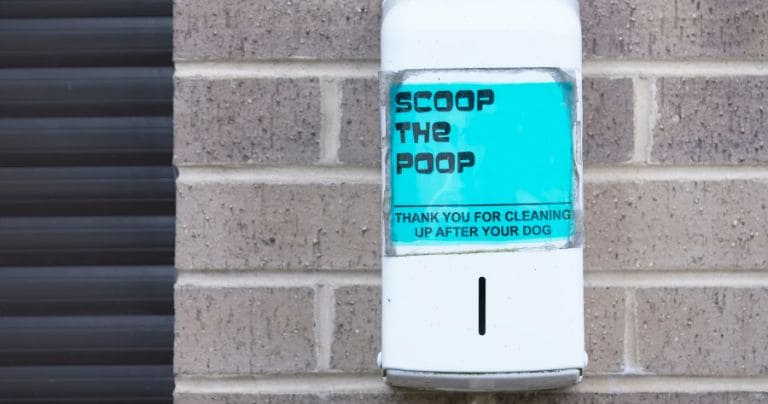
Conclusion
Embracing compostable dog waste bags is a step towards a more sustainable and responsible way of living with our pets. By making informed choices and encouraging wider adoption of eco-friendly practices, we can significantly reduce our environmental footprint and contribute to a healthier planet for future generations.
In our journey towards sustainability, every action counts. Let’s continue to explore and embrace solutions that align with our commitment to environmental stewardship, setting a positive example for others to follow.
